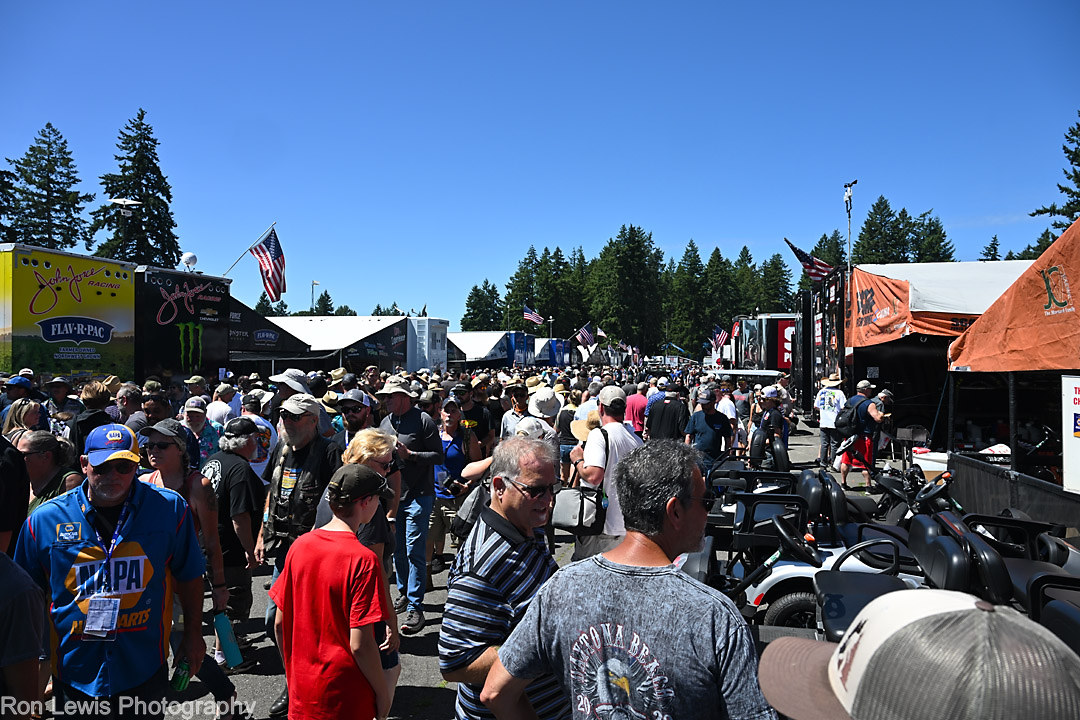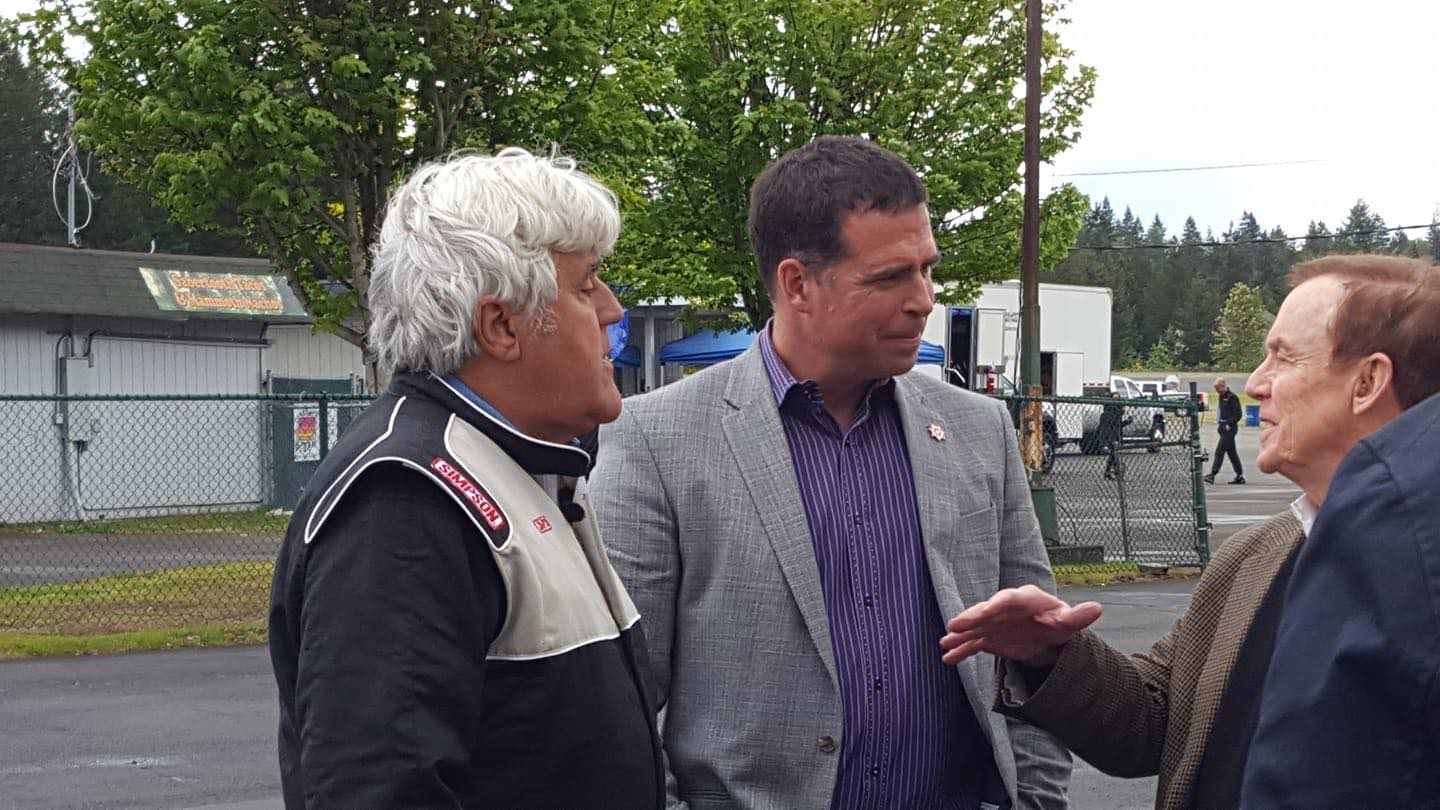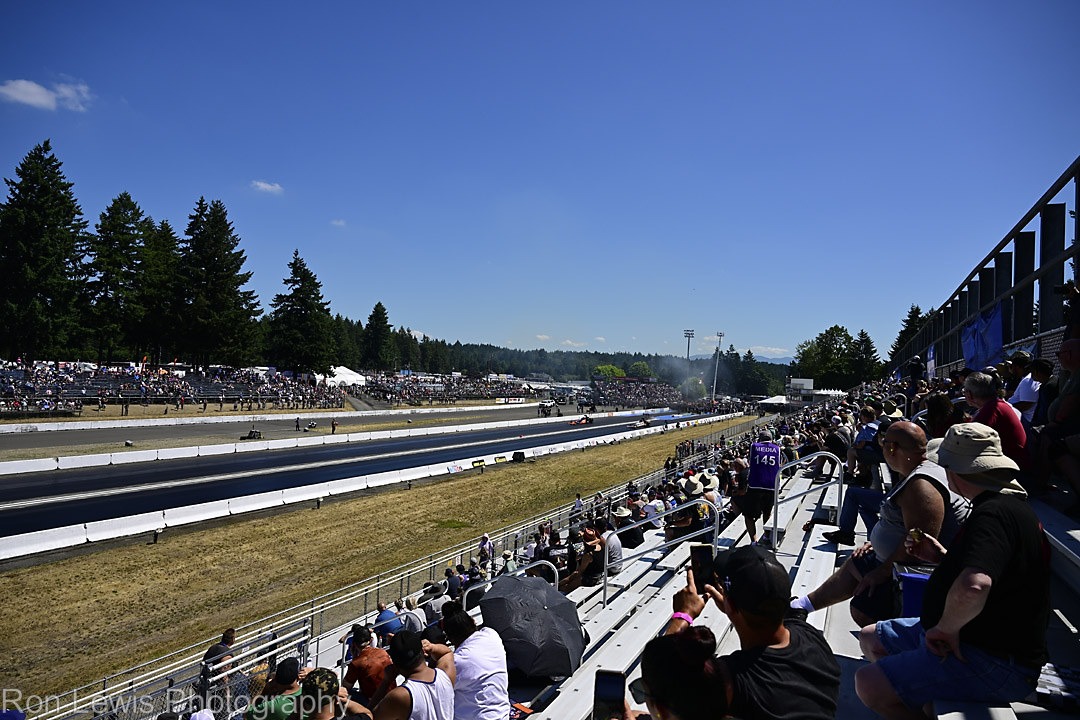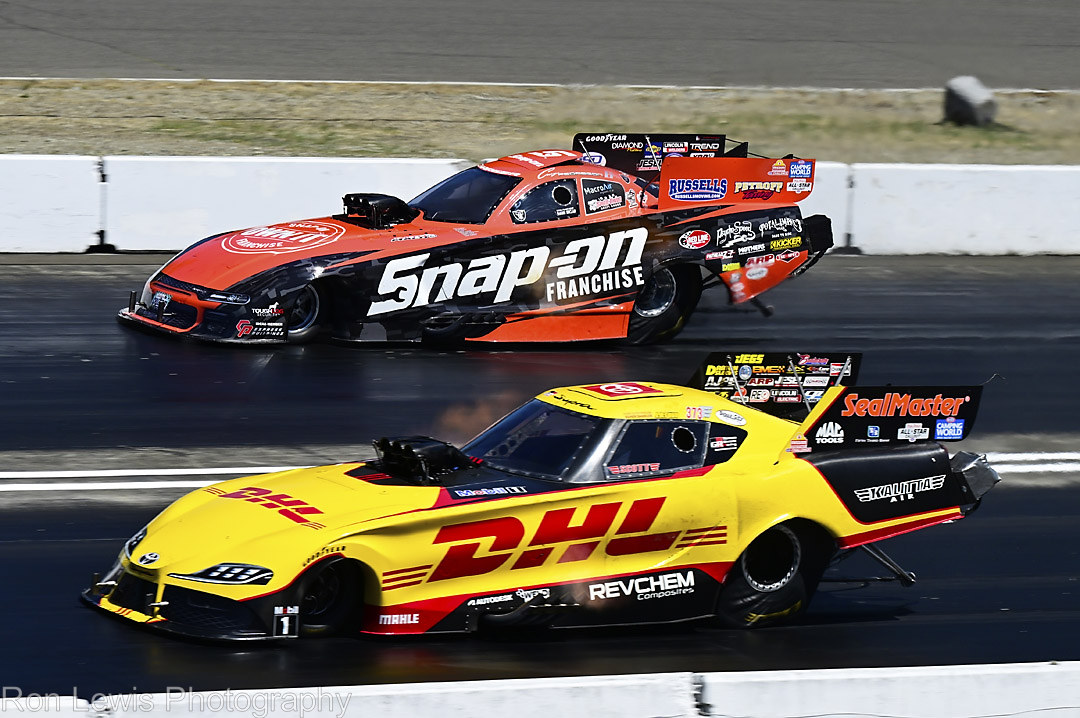MOVE OVER WRIGLEY FIELD - PACIFIC RACEWAYS WILL BE RACING UNDER THE LIGHTS
 Pacific Raceways President Jason Fiorito would like to take credit for doing something no other promoter has yet to do at the drag strip outside Seattle, WA, but he won't.
Pacific Raceways President Jason Fiorito would like to take credit for doing something no other promoter has yet to do at the drag strip outside Seattle, WA, but he won't.
For the first time in history, drag racing will run under the lights at the strip, and the experience is likened to August 9, 1988, when iconic baseball venue Wrigley Field played its first game at night hours.
NHRA Mission Foods Drag Racing Series qualifying at the Northwest Nationals will feature two rounds at 3:30 PM and 8:15 PT on Friday, July 19.
"To be fair, I'm one of three partners that made this happen," Fiorito admitted. "Chad Head at PRO and the NHRA have been integral in this conversation. We worked collaboratively. And Chad Head has been a rockstar with PRO, getting everybody in a room and discussing it and talking about what the run schedule could be."
Friday under the lights will present a different challenge than the track has previously encountered. In the past, the sun sat, often blinding the drivers on the starting line, forcing racing to halt until the sun fell below the treeline yet sending the race officials into a hurry-up mode to complete the day's schedule.
"This extends people's day. It's going to turn Friday into a pretty challenging day for the [track] crew because we start at 9 AM with the sportsmen classes and run all day. So this bumped our day, all of us."
Friday will be a late day for the professional teams, who must service the car after the run and return on Saturday for a Q3 session scheduled for 1:30 PM.
"Everybody involved, from PRO to NHRA to my staff at Pacific Raceways, have all worked together to make this happen," Fiorito said. "For that, I'm really grateful. Everybody likes to write and talk about how there's some friction between NHRA and tracks and PRO. This has been a really collaborative and exciting process because everyone, all three of us, have concentrated on what's best for the fans. I'm grateful for the partnership between PRO, NHRA and Pacific Raceways to make this happen."
Right now, the lighting employed for the weekend is temporary from Musco. One day, Fiorito envisions permanent lighting but temporarily provides the best opportunity for the facility to test dark-time entertainment and the value it brings to the fans.
"We are attempting to fill out the field and pack the stands on Friday, so we decided to spend some money this year and see if we couldn't appeal to some folks to come out and watch," Fiorito said. "The fuel cars under the lights are a spectacle. And as promoters, that's what we're all looking for a spectacle. Seeing those nitro flames out the pipes when they're dark out is arguably one of the greatest visuals in motorsports. So, we really wanted to give that a shot and see if it would pencil out."
Fiorito said Musco trucks will be placed at the starting line, three-quarters of the track, and just after the finish line. The shutdown area has also been lined with temporary LED lights.
"We're testing out the appeal of this to fans," Fiorito explained. "Permanent lighting is millions of dollars. Those permanent lights are not cheap; they take a lot of permitting, structural engineering, and construction and acquisition costs. So, we wanted to test this first to see whether it has the potential of filling the stands. If the appeal is there, we'd certainly talk about putting up permanent lighting."
 Fiorito confirmed the NHRA is sharing in the cost of this experiment.
Fiorito confirmed the NHRA is sharing in the cost of this experiment.
So why did it take so long for lighting to come to Pacific Raceways?
"It was more a curfew issue," Fiorito said. "We're embedded in more of an urban setting than most tracks. And we have houses packed around us, and we're [bound] by a King County Conditional Use Permit. Historically, the curfew has been 9 PM on Fridays and Saturdays and 7:30 PM on Sundays."
In this give-and-take world, Fiorito said concessions were made, such as shortening the curfew on Sundays and adding to Fridays. Lighting was more of a permitting issue than a lighting one.
"We've always had the ability to rent lights; it's just that we've been precluded on a regulatory basis from running past 9," Fiorito said. "We worked this year to trade the 7:30 curfew on Sunday for a 5:30, which bumped us up to 11 on Friday night."
Fiorito, a proclaimed drag racing fan first, said racing under the lights excites him beyond measure.
" As a fan, it's really exciting," Fiorito said. "I mean, none of us track operators are just pure businessmen. If we were, we'd go find something else to do for a living. So, at heart, we're all fans. And as a fan, I mean, I can't wait to watch that last fuel session under the lights. And be with the rest of the fans on the property, witnessing something that hasn't happened at Pacific Raceways. I'm really excited about sitting in the stands and watching this myself."
 Fiorito believes that a measure of the experience will take him back to the days when Bill Doner ran the facility, then recognized as Seattle International Raceway. Understanding Doner's unorthodox approach to promoting drag racing, Fiorito believes there might have been instances where racing back then went into the darkened hours.
Fiorito believes that a measure of the experience will take him back to the days when Bill Doner ran the facility, then recognized as Seattle International Raceway. Understanding Doner's unorthodox approach to promoting drag racing, Fiorito believes there might have been instances where racing back then went into the darkened hours.
"I think 64 Funny Cars ran at night without the lights," Fiorito said. "I think there was a kind of reckless abandonment in the sport back then that doesn't exist today. I don't think you'd find very many competitors that would run down the track with minimal lighting at 330 miles an hour now. But generally speaking, the sport has become much safer, and insurance liability has become more prevalent."
Drag racing icon Don Prudhomme, who will be at the historic event hosting Sunday's track walk, raced many times when the facility was Seattle International Raceway before it was renamed Pacific Raceways. Most of Prudhomme's races at Pacific Raceways were with the Doner booked-in shows.
The tales of post-dusk competition were not fairy tales.
"That's pretty much what we did," Prudhomme admitted. "That was the name of the game back in those days. You could run by the fire of your headers lighting the way."
Prudhomme chuckles when he recalls the last time it happened, and the lack of lighting wasn't the most significant issue he and others faced. Security was often sketchy in the daytime and even more so in the darkness.
"I can remember doing a burnout in the final and people jumped over the guardrails and come over and pounded on the hood of my car and wishing me luck," Prudhomme said. "I'm out on the track and starting to back up, and those were exciting times in Seattle, man."
Top Fuel's winningest driver, Tony Schumacher, has raced and won at Pacific Raceway. As he puts it later in the day, it has always been tough at Pacific Raceways, but not because of the need for more lighting. It was tough because of too much lighting.
"I think we all know that Seattle has a shutdown time just because you're staring dead into the sun," Schumacher said. "It's hard to stage a car looking at a tree where the sun's behind it. There's no amount of sunglasses or visors you can get to make it better.
 "Night racing is cool, man. It just makes for a super, super long day. I always try to tell people we're working three seconds at a time, and when you do one run in the middle of the day and then one run late at night because you got to have a window because of that sun, it's different. But the fans, they're going to get a good show."
"Night racing is cool, man. It just makes for a super, super long day. I always try to tell people we're working three seconds at a time, and when you do one run in the middle of the day and then one run late at night because you got to have a window because of that sun, it's different. But the fans, they're going to get a good show."
Consider Schumacher a fan of racing under the lights, but only under one condition.
"I think any track in nighttime racing is good. So long as the lights are worthy, we are going 330 miles per hour," Schumacher explained. "I did not expect that to happen. Until we race there next week, we didn't have lights, so it never even occurred to me that they might try to bring them in and do that.
"I ran road course stuff there with SCCA stuff, with Skip Barber, so it's always been a cool track. It's a cool place to go. It's a unique race for us. We're one of the only sanctioning bodies that go up that far out that west. So it's good times."
Fiorito believes Friday at Pacific Raceways will take those good times to a new level.
"It's been something that I would've loved, as a fan of the sport, to do all along," Fiorito said. "We've had some challenges with the county over time, and there's always been a little trade-off at the national event with the Friday and Saturday curfew versus the Sunday curfew. We've always worked with the county to give us the ability to extend Sunday in case something happened, and we needed to finish the show.
"But over time, the NHRA and the competitors have become so efficient that we really haven't had to push Sunday. So, it opened up the potential for extending Friday and Saturday."
So, if Fiorito can take credit for anything, it's the idea of racing under the lights at his track, and he wouldn't miss it for the world.








































